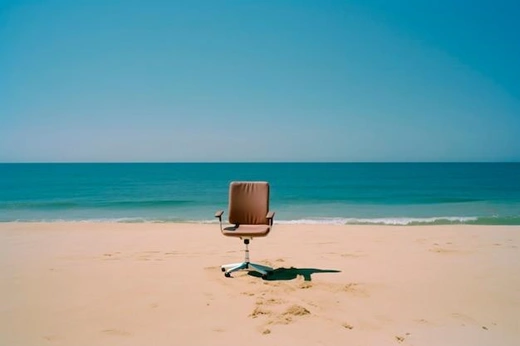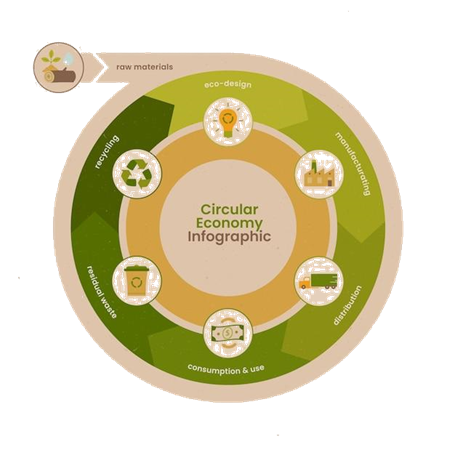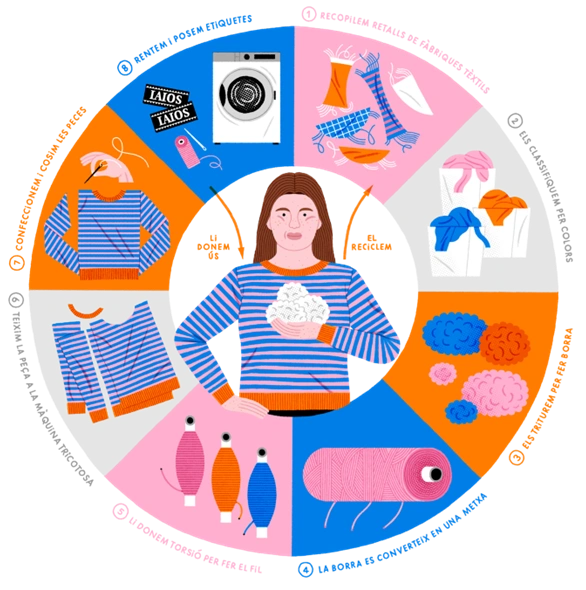When design and creativity meet the planet and the environment

Knowledge
- Life cycle thinking: first approach to this way of thinking which is key when ecodesigning.
- Environmental sustainability and impacts: understanding the impacts that design decisions have on the environment.
- Ecodesign and ecodesign strategies: theoretically understanding of the ecodesign concept and its strategies that help reduce the environmental impact of design decisions.
Skills
- Critical thinking and problem solving: identifying critical aspects within the life cycle of a product, a service or a system in terms of environmental impacts generation. Proposing strategies to improve such environmental performance.
- Research and creativity: great alternative ways of doing and solve problems will come from the combination of these skills
- Team work and communication: working in a team generating debate to finally find the best solution is as important and communicating the advantages of the proposed solution.
Responsibility & Autonomy
- Manage complex technical or professional activities or projects, taking responsibility for decision-making in unpredictable work or study contexts; take responsibility for managing professional development of individuals and groups.
Welcome to the Eco-design Web Quest!
Have you ever considered that everything surrounding us made by humans has been designed? And have you ever thought that almost all designs generate environmental impacts? All products, services, and systems require materials and energy, which are extracted from the environment, and generate emissions and waste, that end up and impact on ecosystems. Because of this, among eco-designers, it is quite popular the idea that the most environmentally sustainable chair is the chair that doesn’t exist. However, we cannot simply eliminate all human inventions (although some of them could…).
It is known that around 80% of the environmental impact generated by a product is determined during the design phase. This means that proper design decisions have the potential to reduce 80% of the environmental impact associated to a product, service or system. While we may need a chair, and this chair will impact on the environment, we can strive to minimize the damage to the environment when designing this chair, which will later be produced, used, and disposed of (or repaired, reused, recycled…).
Eco-design emerges within this way of thinking, aiming to minimize environmental damage. Eco-design considers the environmental aspects of the entire life cycle of a product, seeking to generate the least environmental impact throughout its life cycle. For example, how many water is needed for the cultivation of the cotton that will be used to make a garment? Could it use less? What type of energy is used to cut a piece of wood? Could this energy be renewable? Where will you dispose of the packaging of a product sent to your house? Is all this packaging necessary?
This Web Quest will encourage you to reflect on how products, services, and systems are designed and how they can be eco-designed. You will explore life cycle thinking to understand all the processes and decisions behind a product, the impacts these decisions may have on the environment, and most importantly, how eco-design plays a key role in making the best decisions to generate the smallest impact on the environment.
You will qualitatively and quantitatively assess the environmental sustainability of an everyday product in order to propose adequate eco-design strategies which will potentially lower the environmental impacts that the product generates to the environment and improve the environmental sustainability of its whole life cycle.
Follow the steps listed below.
1. Team up!
Create teams of 3–4 members to work together on the project
2. Get an idea of the eco-design framework
Go through the videos and resources to get an initial understanding of the topics:
2.1 Life cycle thinking
When environmentally assessing a product, a service or a system, it is important to understand its whole life cycle. The life cycle of a product includes all the phases or steps that such a product undergoes since it is designed and the materials it needs are extracted from the environment, until its end-of-life when the product gets disposed of. Life cycle thinking is the way of thinking that includes environmental (also economic and social) consequences of a product or process through its life. Thus, it is a relevant approach when aiming to understand the environmental implications of a product, service or system.
Chapter 5 - Assistant’s tools toward life cycle assessment

Eco-design is defined as the integration of environmental aspects into product design with the aim of improving the environmental performance of the product throughout its whole life cycle. It considers the environmental aspects at all stages of the product development process, striving for products, services or systems which make the lowest possible environmental impact throughout the product life cycle. This can be accomplished by applying eco-design strategies to the different life cycle stages of a product.
Ecodesign – Sustainability Guide
You must know that eco-design (as well as life cycle thinking) is key for the circular economy, as it has the potential to allow its implementation. Most eco-design strategies promote a circular economy.
2.3 Life cycle assessment and environmental impacts
When eco-designing a product, service or system, you should tackle all life cycle stages and eco-design them all. However, sometimes it is not possible to apply that many eco-design strategies or to improve the whole product, service or system. Thus, prioritization must be set. Life cycle assessment (LCA) can be a useful methodology to do so. LCA measures the environmental impacts of the whole life cycle of a product, service or system. Therefore, it allows detecting which stages and aspects of the product generate higher environmental impacts and thus, are critical aspects with priority to be improved by applying eco-design strategies.
https://www.youtube.com/watch?v=4wQ2Jm6i9F0
Every product generates waste and emissions to the air, water and soil, which have environmental impacts. The most popular impact is the one produced by CO2 emissions, which generate the greenhouse gas effect and promote climate change. However, every product, service or system has other types of impacts, such as resource scarcity, acidifications of the oceans, or water consumption. When we read that a product has a carbon footprint of 20kg of CO2, it means that the life cycle of such a product (which includes all life cycle stages) emits this quantity of CO2 to the air.
Causes and Effects of Climate Change | National Geographic
Environmental Impacts - Circular Ecology
2.4 Eco-design strategies
Eco-design strategies move from reducing the weight of a material, making a product a mono-material, or using a recycled material in the materials' extraction stage, to using renewable energy during the production stage of the product, or designing such a product for easy disassembly, which will make the product repairable and recyclable at it end-of-life phase. Eco-design strategies can be applied throughout the whole life cycle of a product service system, although it might be useful to start focusing on those aspects that are known to be more environmentally critical (e.g., because you have previously known via LCA). Another useful tool to assess the environmental performance or a product in order to qualitatively detect critical aspects is the Eco-design Strategy Wheel.
Okala EcoDesign Wheel App Resource | Embedding Project
3. Explore …
Choose an everyday product which you can have access to and select two or three variants of the product (e.g., if you choose a pen, select three pens that differ from one another due to their size, materials, producer, type of system used to change its ink when it finishes, etc.).
Schematically draw the life cycle of your products: which materials are they made of? How could they have been produced? Where may they come from? Where do they end up at its end-of-life?
After observing the products and researching about them to draw the life cycles, you will be prepared to qualitatively and quantitatively evaluate every variant of the product selected.
Qualitative evaluation:
To qualitatively explore the environmental performance of the selected products, you will follow the Eco-design Checklist and the Eco-design Strategy Wheel. You can find both resources in this document (p.56 and p.57, Figures 2.4 and 2.5):
Which aspects of the life cycle of your products do you identify as more critical or with worst environmental performance? (Tip! It will be the aspect with smaller areas in the Wheel). Could these hot points be improved in order to generate smaller environmental impacts? Reflect on these as such hot points are the ones where eco-design strategies have the potential to make a bigger difference!
In this video you can see an example of scheme of life cycle of a toothbrush and how it is qualitatively evaluated following the Ecodesign Strategy Wheel: 🌿 Ecodiseño EJEMPLOS REALES | ¿Cómo aplicarlo? 🔄 ☸️ La rueda estratégica del ecodiseño (in ‘Configuration’ / ‘Subtitles’, remember to activate them by selecting ‘Translate Automatically’ to your language). You can also use or get inspired by this document based on the Ecodesign Checklist and the Ecodesign Strategy Wheel: 🥇 ProtectedPool ➤ Most Powerful and Safest Web3 Smart DeFi Wallet 🔐 (use a free and online PDF or Word translator to translate the document, or use the Google Translate extension which will translate the ‘Transcripción’ / ‘Transcription’ section of the website, which is a replication to the content of the document).
Quantitative evaluation:
It is quite normal that a considerable portion of environmental impacts generated by a product come from decisions related to the selection of materials. But how can we know if a pen made of polypropylene is more environmentally harmful than a pen made of polycarbonate?
Track all the material composing the products you selected, and weight them all separately. Then, use the IDEMAT App to calculate the environmental impact in terms of CO2 emissions generated by every component of your products. You can download the Idemat App here.
Which components do you identify as more critical or with the worst environmental performance? (Tip! Higher CO2 emissions mean more environmental damage).
4. Putting Theory into Practice - Living Lab Activity:
And finally, you are going to eco-design! It is in this part of the Web Quest that you are going to propose and improve the environmental performance of your product by proposing eco-design strategies which may be relevant according to the research and qualitative evaluation you have already done.
It is time to get creative! Look for all the strategies you have learned with all the materials provided in this Web Quest, research on what other companies are doing, and become propositional. Select those strategies which improve the aspects you qualitatively identified as more critical. You can also select different materials or reduce the weight of materials you quantitatively identified generating higher environmental emissions. And when you are done, assess your new proposal again with the Ecodesign Strategy Wheel. Compare the evaluations you had previously done of the selected products with this new evaluation. Have they been improved?
5. Publishing the article and wide dissemination
Prepare a PowerPoint presentation or a video where you introduce:
- The initial variants of the product were assessed.
- The drawn scheme of the life cycle of the variants is assessed.
- The first environmental assessment was done: the qualitative one about the whole product with the Ecodesign Strategy Wheel, and the quantitative one about the materials of the product with the Idemat App.
- The critical points detected.
- The proposed eco-design strategies to tackle the hot points detected.
- The life cycle of the eco-designed product you propose.
- A qualitative (via the Eco-design Strategy Wheel) and a quantitative (via values from the Idemat App) comparison (for the whole life cycle and for the materials) of the initial variants of the product assessed and the eco-designed version.
You can end your presentation by posing challenges and difficulties you encountered during the research and when taking design decisions, as well as on reflecting about the importance of eco-design.
Life cycle thinking
- A Guide to Life Cycle Thinking. Absolutely everything that is created… | by Leyla Acaroglu | Disruptive Design | Medium
- Chapter 5 - Assistant’s tools toward life cycle assessment
Ecodesign
Life cycle assessment and environmental impacts
- [EN] Understanding Life Cycle Thinking
- Causes and Effects of Climate Change | National Geographic
- Environmental Impacts - Circular Ecology
Ecodesign strategies
Ecodesign Checklist and Ecodesign Strategy Wheel:
- Delft Design Guide (p.56 and p.57, Figures 2.4 and 2.5)
- 🥇 ProtectedPool ➤ Most Powerful and Safest Web3 Smart DeFi Wallet 🔐
Case study: Toothbrush evaluation following the Ecodesign Strategy Wheel
IDEMAT App
Congratulations! By completing this WebQuest you have gained valuable insights about the impacts that design decisions can have on the environment, and the importance of ecodesign when taking these decisions. From now on, whenever you see a claim about an ecodesigned or sustainable product, service or system, be ready to reflect on the real sustainability of this. Is a portion of the materials used recycled, or has the product been fabricated with renewable energy? Yes. Designers may have applied ecodesign strategies to improve the environmental sustainability of such products. But remember, ecodesign is not just about applying a mere strategy, but assessing and tackling all phases of the whole life cycle! There are loads of different ecodesign strategies to improve the whole life cycle!
- ISO 14006:2020 Environmental management systems – Guidelines for incorporating ecodesign , International Organization for Standardization, ISO Standard
- ISO 14040:2006 Environmental management – Life cycle assessment – Principles and framework, International Organization for Standardization, ISO Standard
- Basic Concepts on Ecodesign. Unit 13 Final Course Review, Carmen Fernández Fernández, Report
- Design for Circularity – Identification of Fields of Action for Ecodesign for the Circular Economy, Michael Riesener, Maximilian Kuhn, Frederike Hellwig, Johanna Ays, Günther Schuh, Conference proceeding
Sweaters from Iaios brand
Iaios is a Catalan brand commercializing sweater. Iaios’ sweaters are an example of ecodesigned clothing as ecodesign is present on the whole life cycle of the product.
Regarding the materials, the yarn of the sweaters is 100% recycled, coming from leftover scraps from textile factories which are recycled to create new yarns (promoting the circular economy). The production process to generate such new yarn generates no waste and it also avoids the dying process, which is highly contaminating to water. The production process used saves 99% of water consumption comparing to traditional processes. Additionally, the sweaters are locally produced, thereby avoiding the environmental impacts associated with long-distance transportation of products by plane, ship or truck (this also promotes the local economy while ensuring dignified work and transparency).
The design is a modern pattern with a timeless style, made to last for many winters, as durability is very important. Also, with the objective of making the sweaters last for many years, the company offers a repair service once a year. During summer, they collect all the sweaters needing repair and fix them, so they are like new for the following winter. To do so, the design of the sweater has previously been thought to allow easy repairing of some parts. This aspect also exemplifies how servitization can be useful in ecodesign.
Finally, once the sweater reaches the end of its useful life, the customer can send it back to the company, so they ensure the sweater is recycled again. Again, the sweaters have been designed with no buttons, zippers, or other materials that could complicate the recycling process.
Link: https://ca.iaios.com/pages/sobre-iaios

